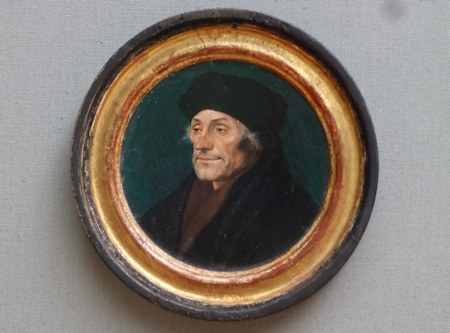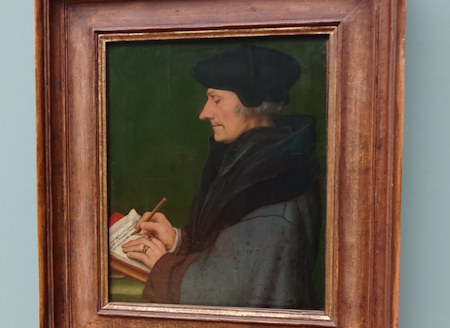|
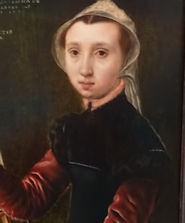 Dwight Peck's personal website Dwight Peck's personal website
More Colmar street scenes (2016)
The medieval town where point-and-shoot photographers can't go wrong
You may not find this terribly rewarding unless you're included here, so this is a good time for casual and random browsers to turn back before they get too caught up in the sweep and majesty of the proceedings and can't let go.
A side visit to the Kunstmuseum Basel
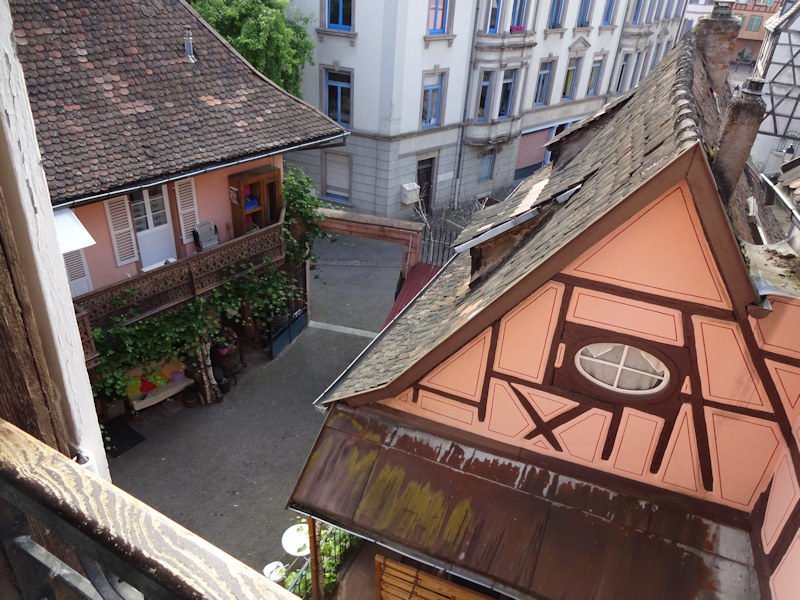
Early rising in the Maison Martin Jund -- we're off to visit the city art museum in Basel (or Bâle, in French), a short drive back southward into Switzerland. 7 June 2016.
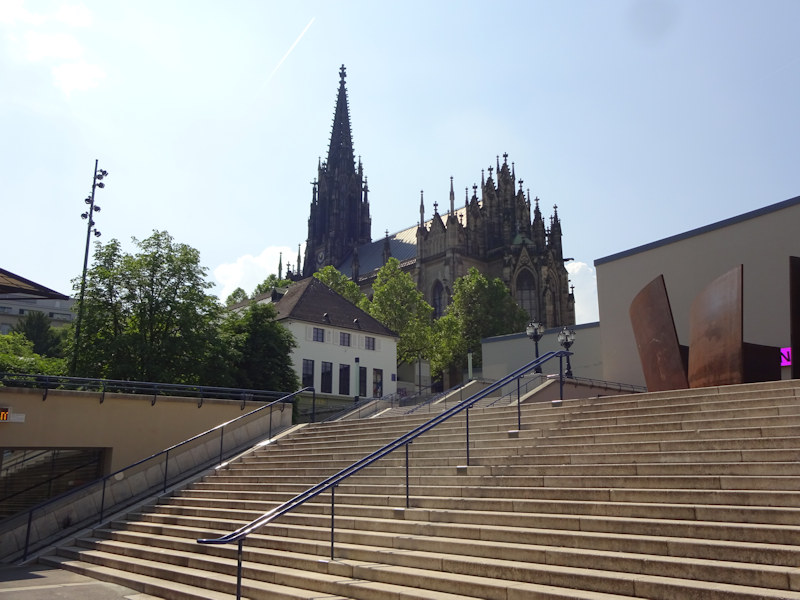
The Elisabethenkirche from the Theatre, en route on foot from the parking garage
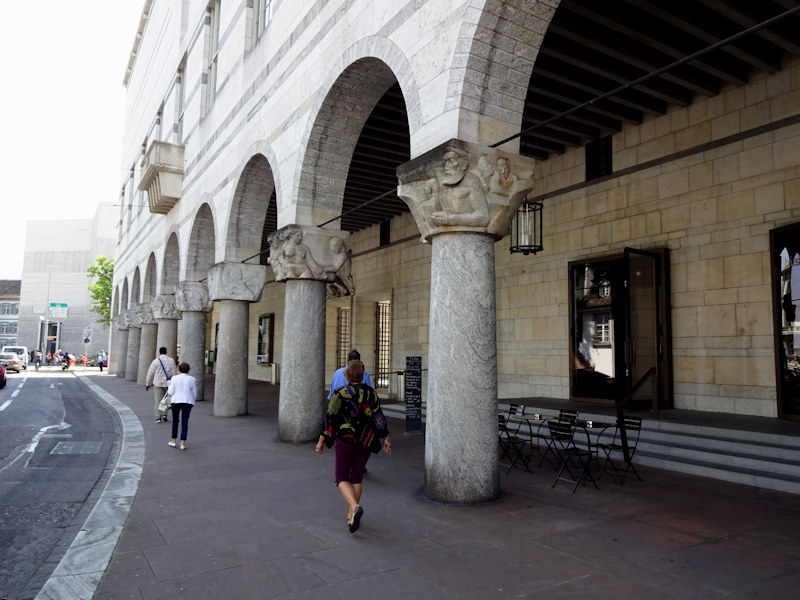
The front of the Kunstmuseum
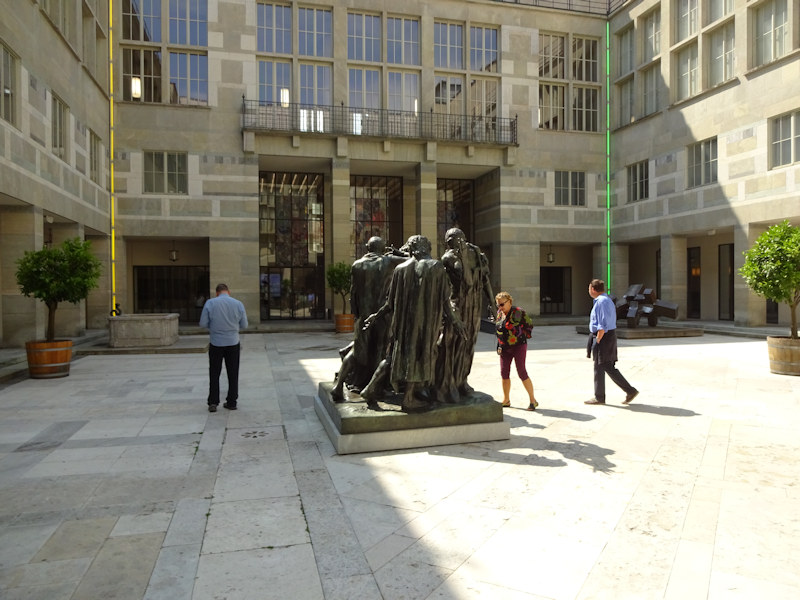
The Burghers of Calais, one of 12 casts of Rodin's 1889 original, this one made in 1943
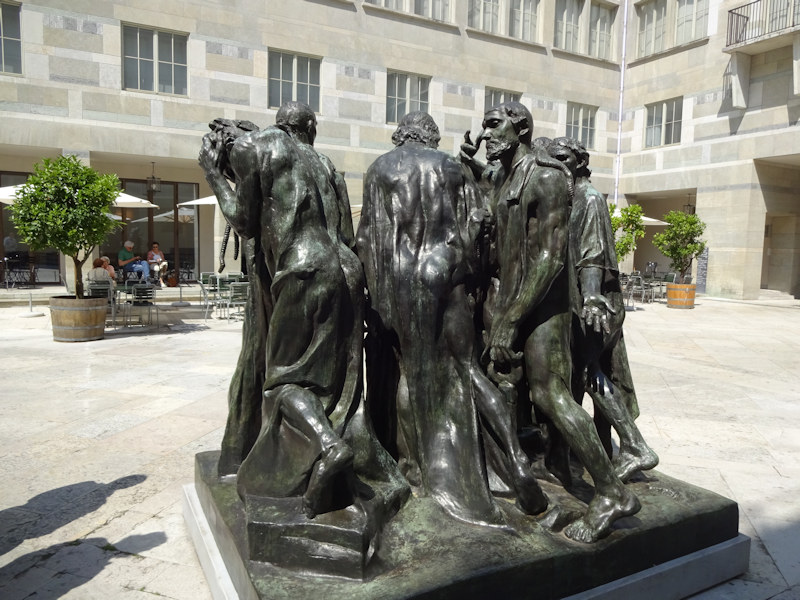
The English King Edward III agreed to spare Calais in 1347, after a yearlong siege, if six leading citizens would present themselves for execution with nooses round their necks; they did so, but the king was persuaded to spare them anyway. Calais was retaken by the French in January 1558.
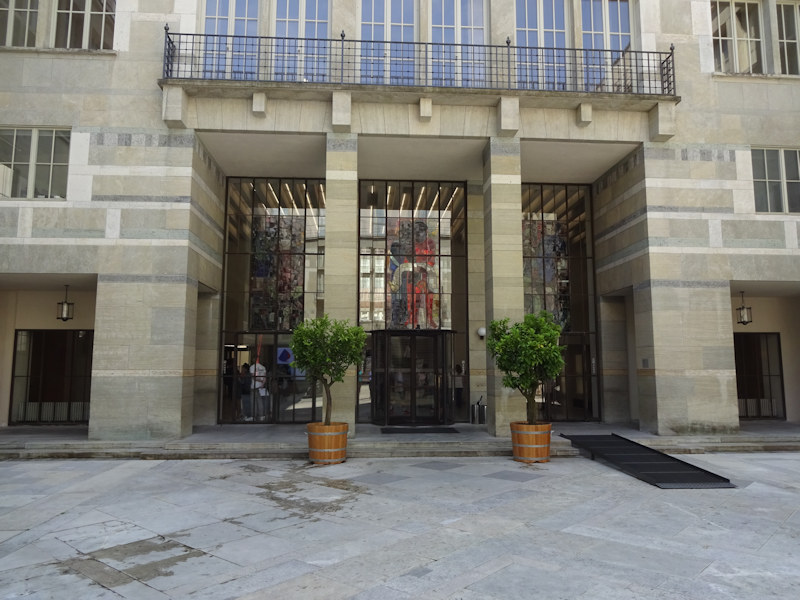
Entering the museum
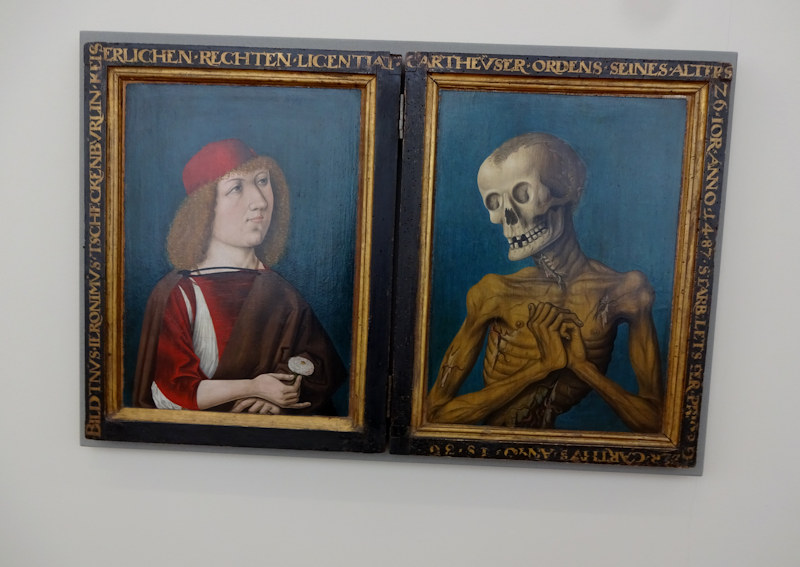
To put us into the right mood: a reminder by the "Oberrheinischer Meister" of mortality, dated 1487, specifically for a well-coifed fellow named Hieronymus Tscheckenbürlin, a well-to-do 26-year-old doctor of law and son of the mayor, who joined the Carthusians in the Charterhouse in Theodorskirchplatz in that year, becoming prior in 1501 but sadly fleeing the city under pressure from the Reformation in 1529.
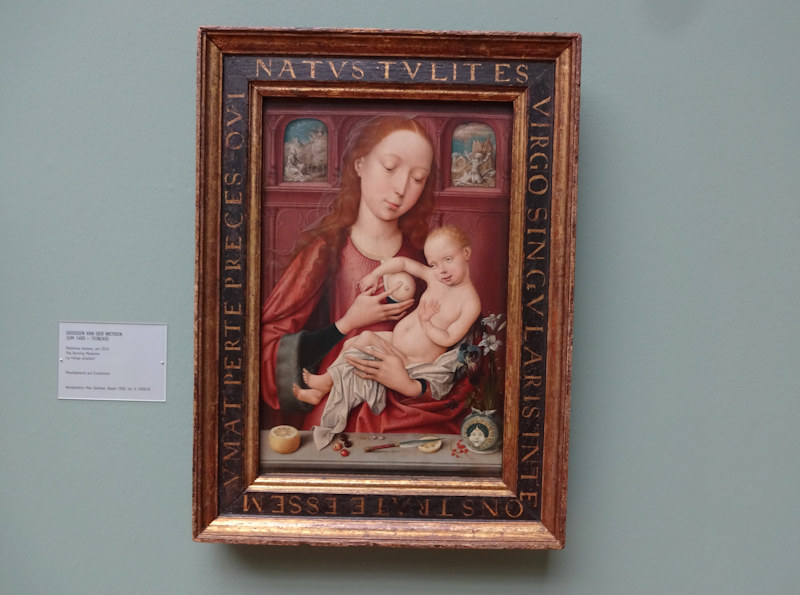
Another awkward 'Nursing Madonna', ca. 1515, attributed to Goswin van der Weyden, grandson of Rogier van der Weyden
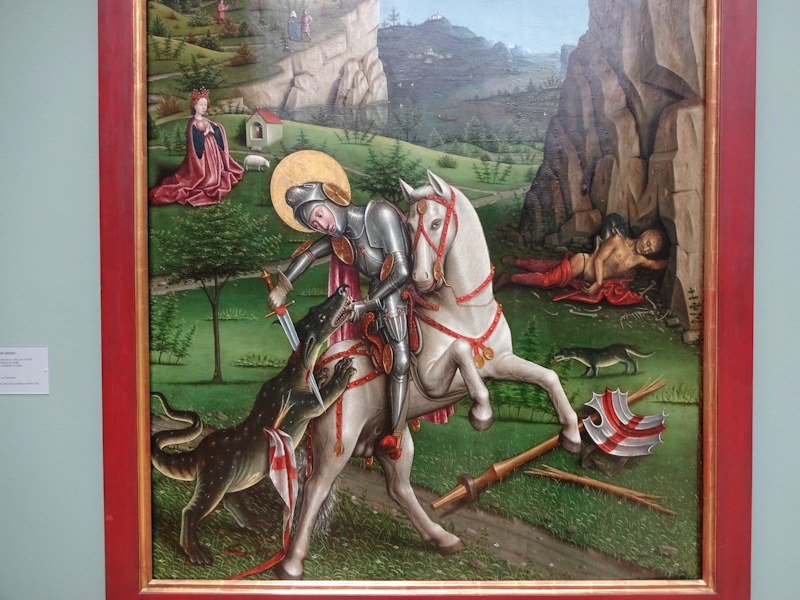
An evocative St George and the Dragon altarpiece, ca. 1450, by the Meister von Sierentz
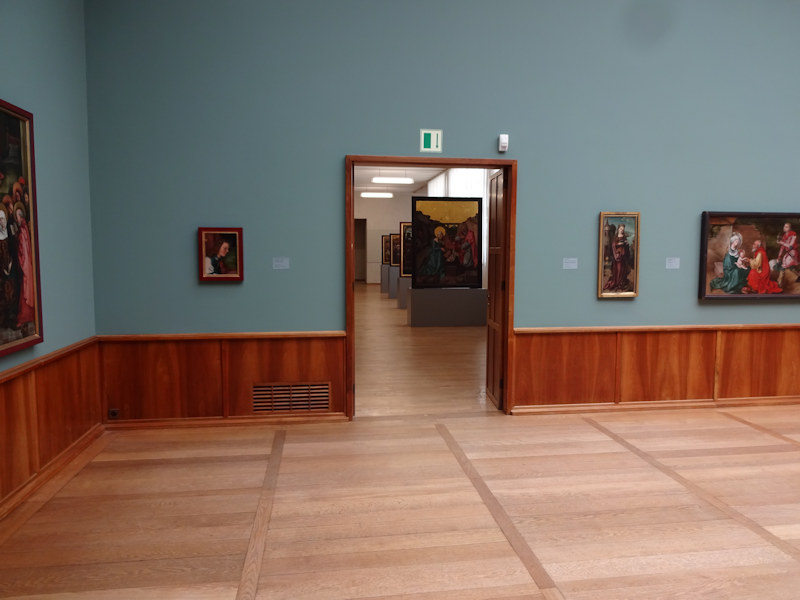
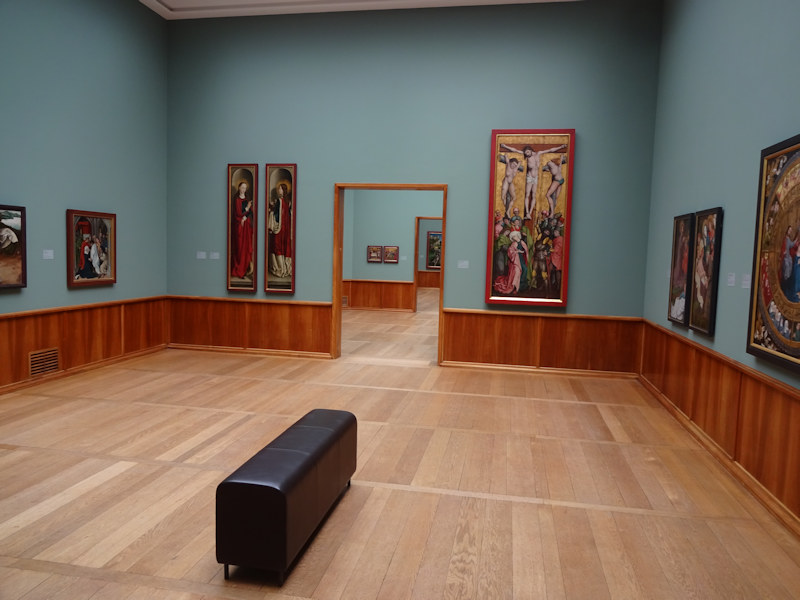
Commodious and comfortable
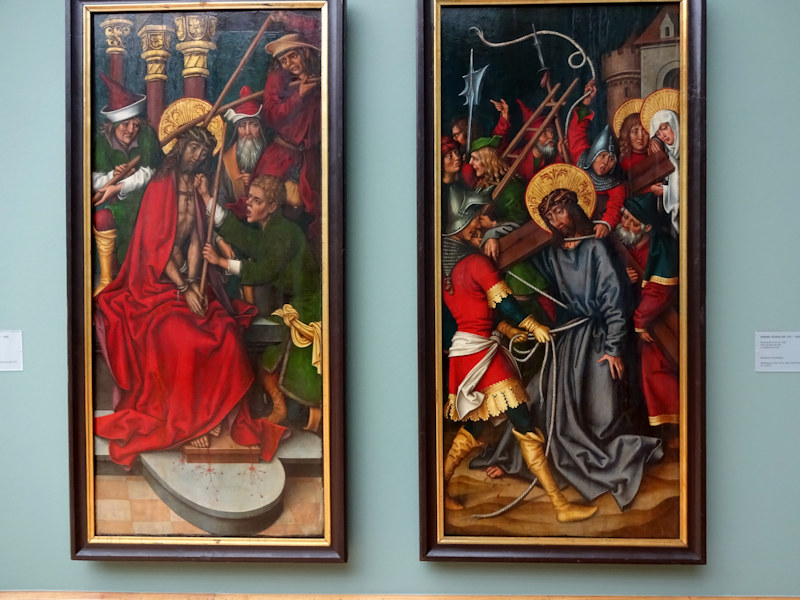
Christ and his problems, ca. 1500, attributed to Sigmund Holbein, younger brother of Hans Holbein the Elder
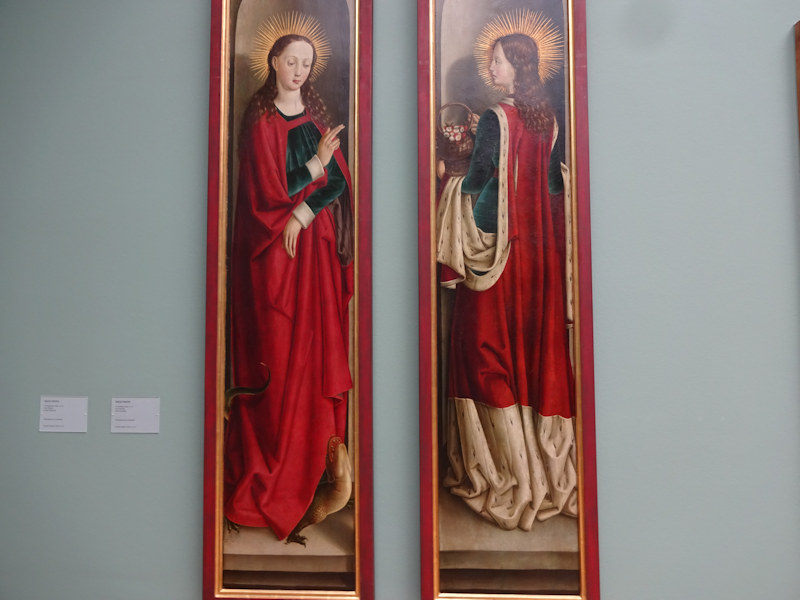
Very tall saints (Margaret and Dorothy), one hiding a small dragon under her robe, late 15th century, attributed just to the "Basler Meister"
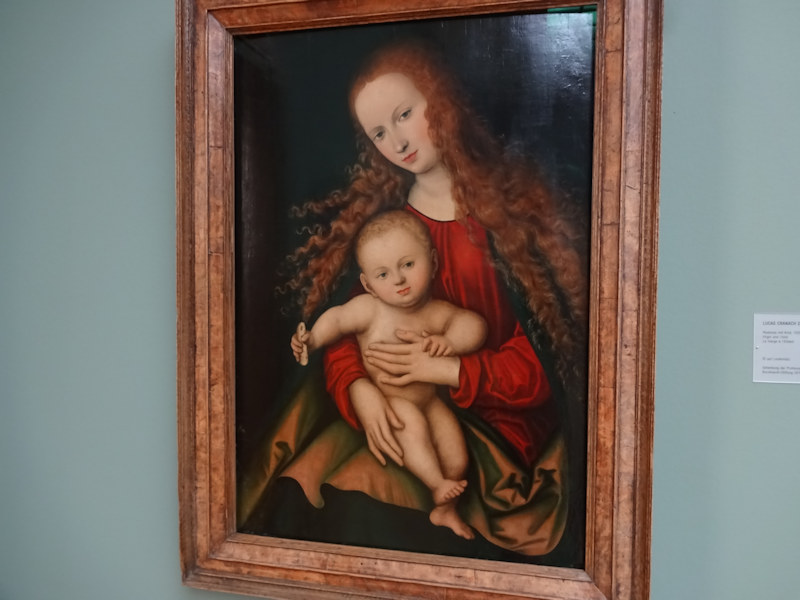
Madonna and Child, 1529, Lucas Cranach the Elder
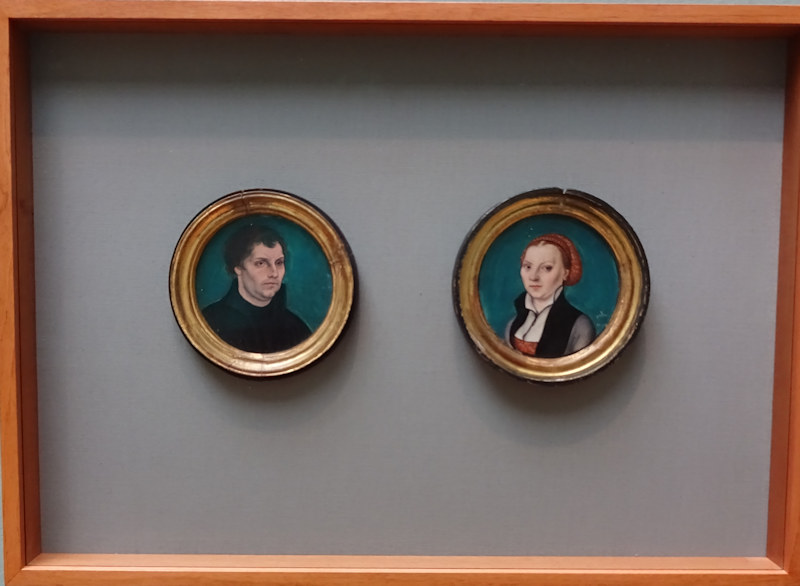
The famous miniatures of the former monk Martin Luther and the young nun, Katherine von Bora, whom he'd rescued from her convent, on the occasion in 1526 of their marriage, at which Lucas Cranach was present
 |
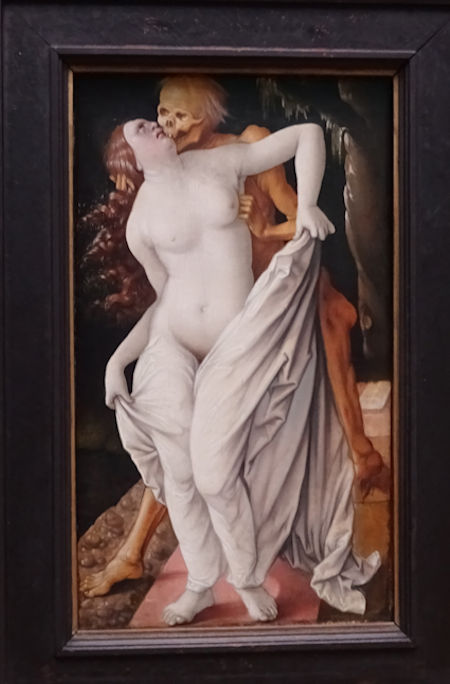 |
Two unforgettable versions of 'Death and the Maiden', by Dürer's protégé Hans Baldung Grien, dated to 1517 and the early 1520s respectively

One of Lucas Cranach the Elder's many versions of the Judgment of Paris

Labeled as a Mary Magdalene by Cranach, but unlike any other Mary Magdalene we've seen anywhere and not much like Cranach's well-known 'Saxon lady as Mary Magdalene'
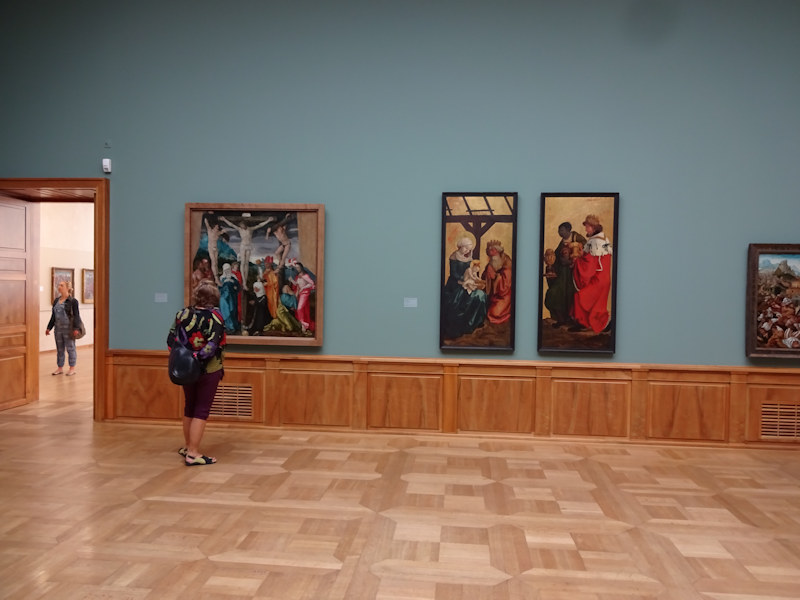
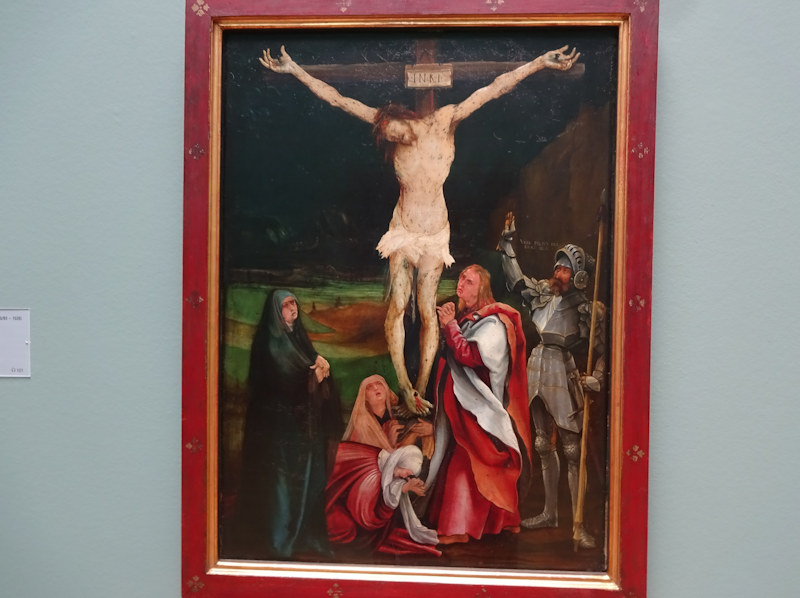
A characteristically grim Crucifixion by Matthias Grünewald, ca. 1515
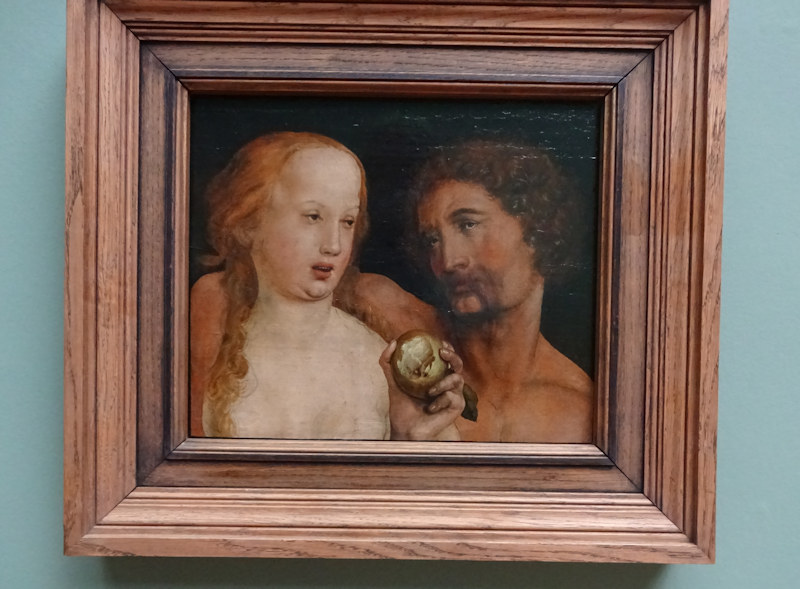
An uncommon 'Adam and Eve', by Hans Holbein the Younger, 1517
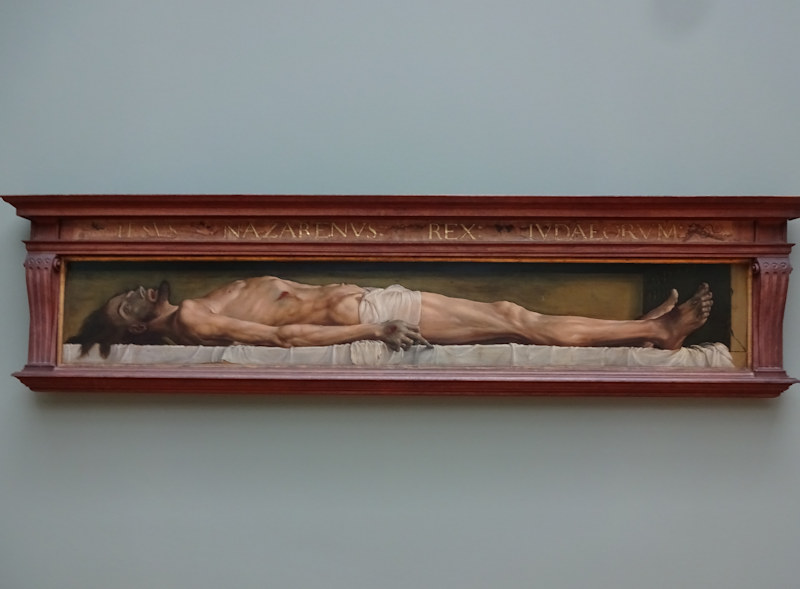
Holbein the Younger's Christ in the Tomb, ca. 1521
Two of Holbein's many portraits of the great humanist scholar Erasmus
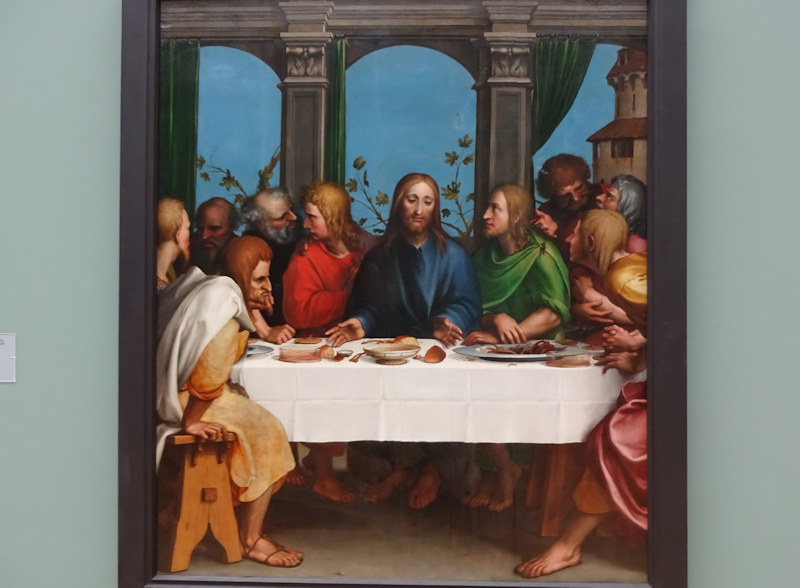
The Last Supper; looks like only some bones and a few dinner rolls are left, and the world's ugliest Judas Iscariot (by a colleague of Hans Holbein, Basel, 1527)
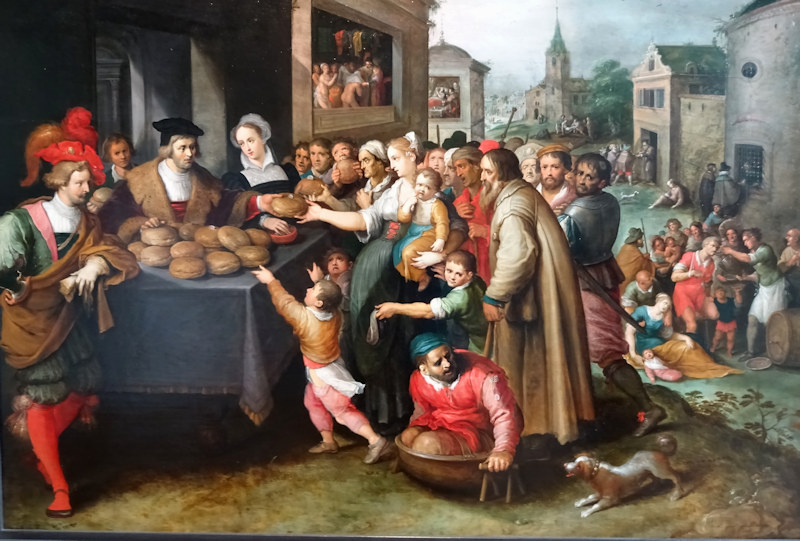
The Seven Works of Charity (Frans Francken the Younger, dated 1617)
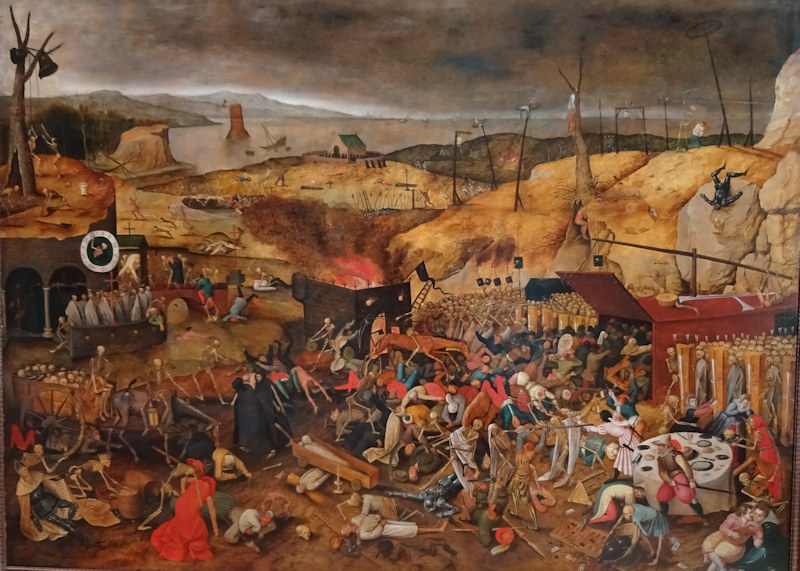
The Triumph of Death (Pieter Brueghel the Younger, ca. 1608)
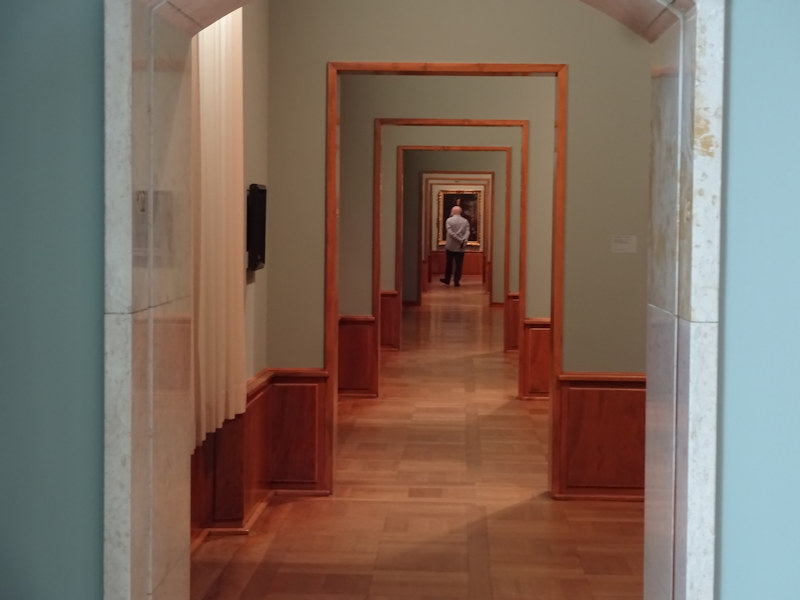
Symmetries
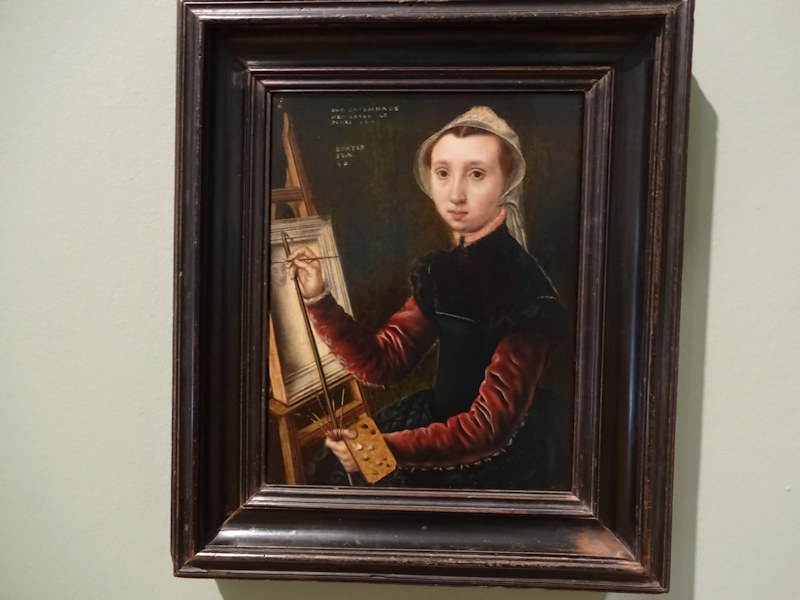
A self-portrait by Catharina van Hemessen at about 20 years old, in 1548, said to be the earliest self-portrait of an artist at his or her easel, of either gender. She was a successful Flemish portraitist, patronized by Mary of Hungary, the Spanish Governor of the Netherlands from 1531 to 1555 and sister of the Emperor Charles V, and a serious art collector, who at her death in 1558 provided Catharina with a generous pension.
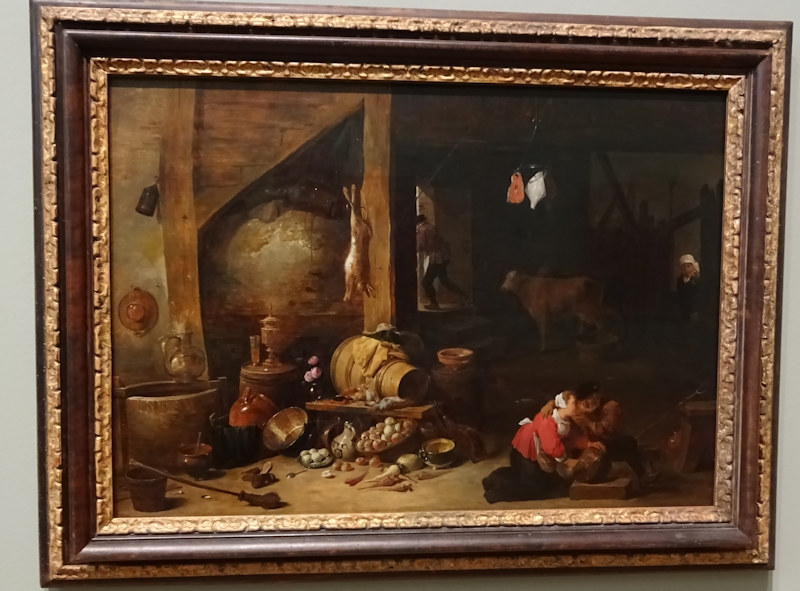
Teniers the Younger, 'In the stable', about 1643
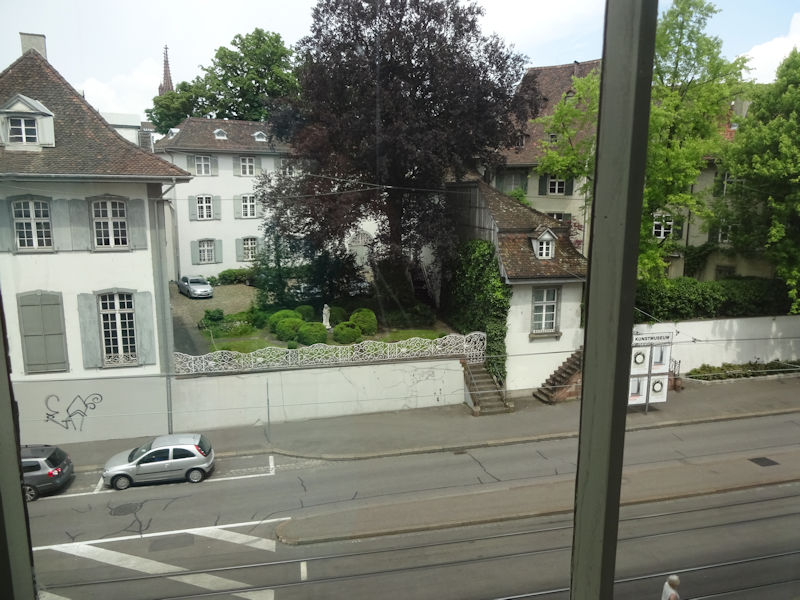
The view out the window over St Alban-Graben
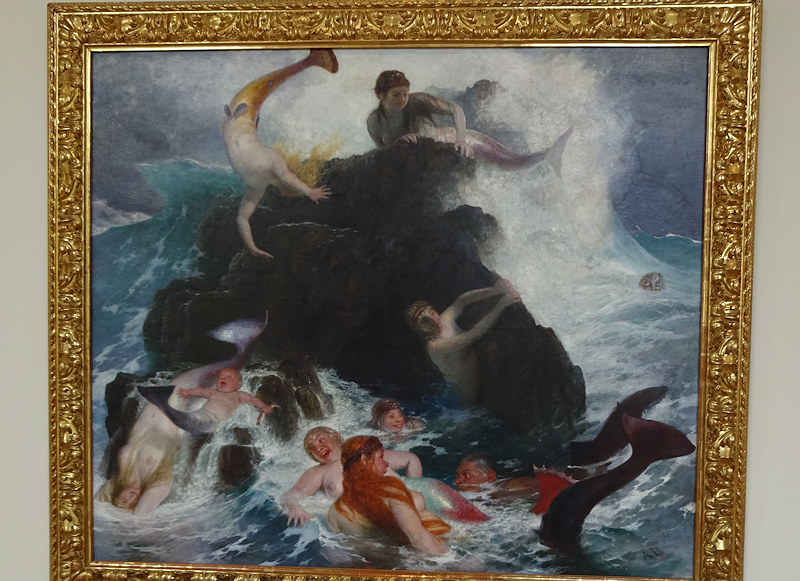
And now we come to the Arnold Böcklins! This is 'The Nereids (or Naiads) at play' (1886)
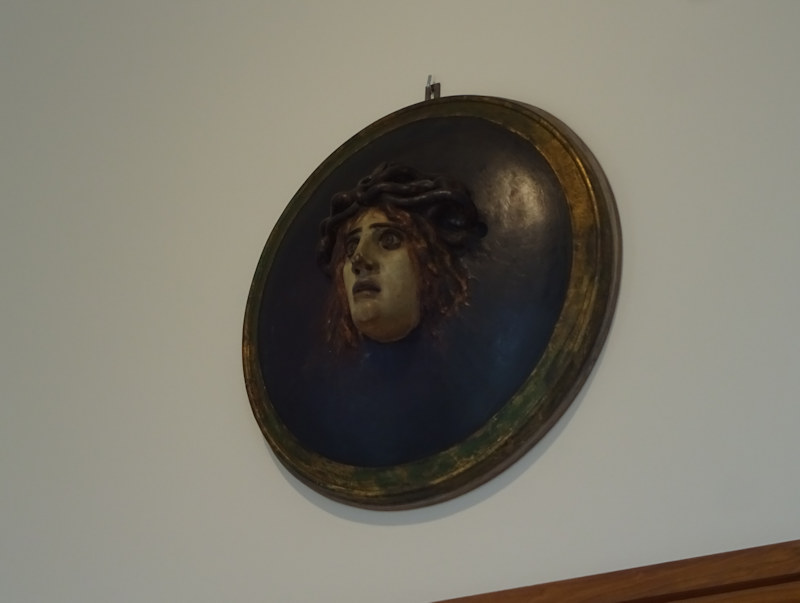
Medusa -- the Böcklin vision
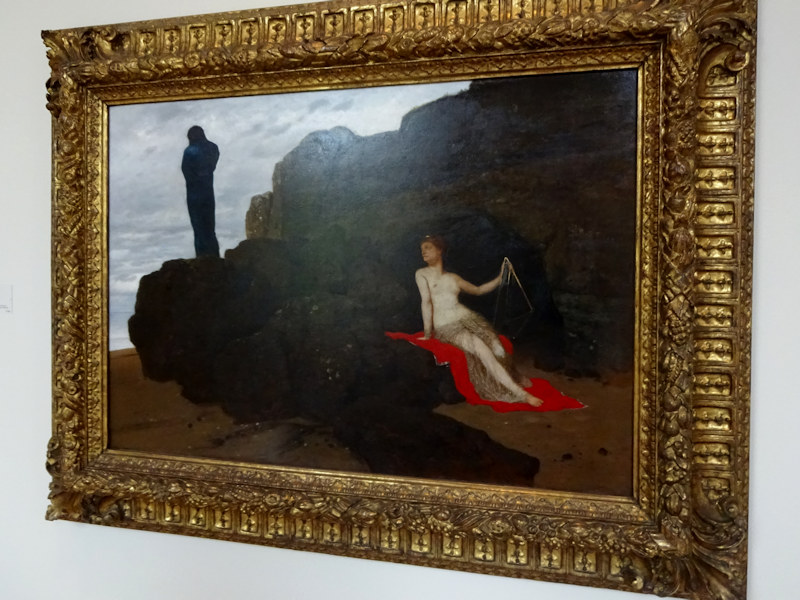
'Landscape'. Böcklin (1827-1901) was born in Basel and returned there often, but also traveled widely in his studies and lived for extended periods in Munich and Zürich and in Rome and Florence. He was an extremely popular and influential symbolist painter in his time (Hitler is said to have owned eleven of his paintings), and reproductions were found in homes all over Europe.

This is the 1880 first of five versions that Böcklin made of his influential 'The Isle of the Dead' by 1886, said to have been inspired by the English Cemetery in Florence where he was then living, and where his daughter was buried.
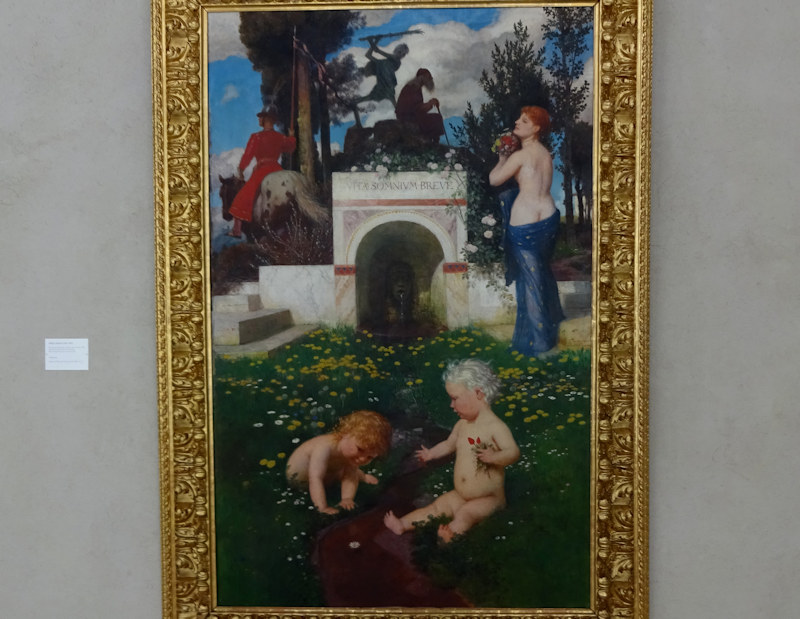
Böcklin's 'Life a Short Dream' (Vita somnium breve), 1888
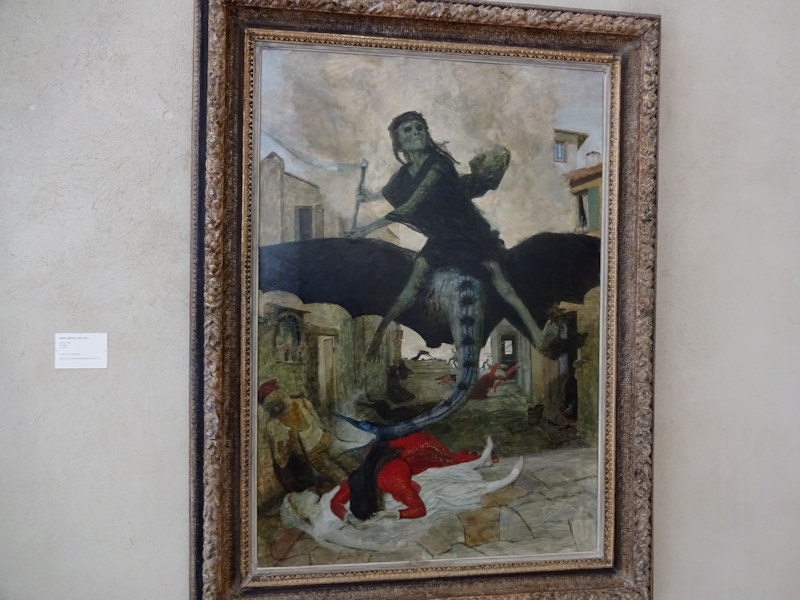
'The Plague', 1898
 |
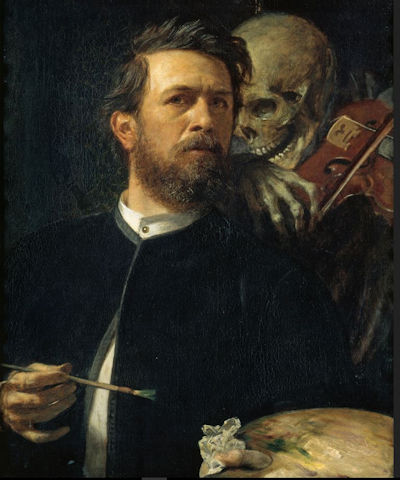
Left: a Böcklin self-portrait from 1893, snapped on the run. Above: his far more famous self-portrait from 1872 (from Wikipedia; not in the Basel museum) |
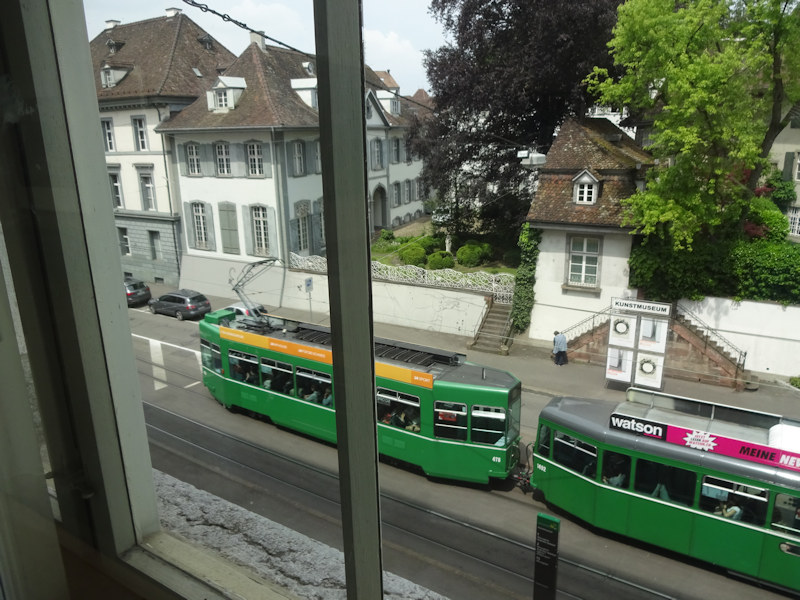
A passing Basler tram
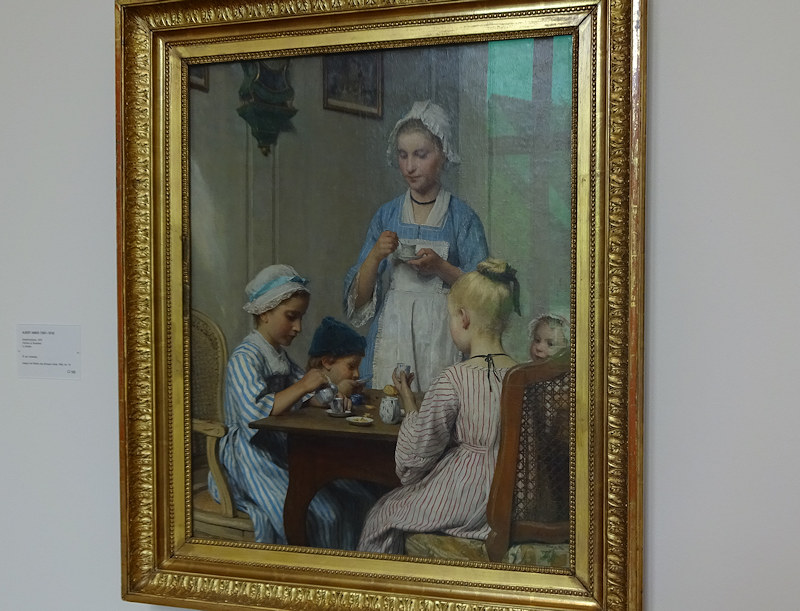
Moving on: 'Kids having breakfast', by Albert Anker, the popular Swiss painter of rural life, 1879

'Watering the cows', 1888, by the stateless Italian-born Giovanni Segantini, who spent most of his life in the Swiss Alps painting rural life en plein air
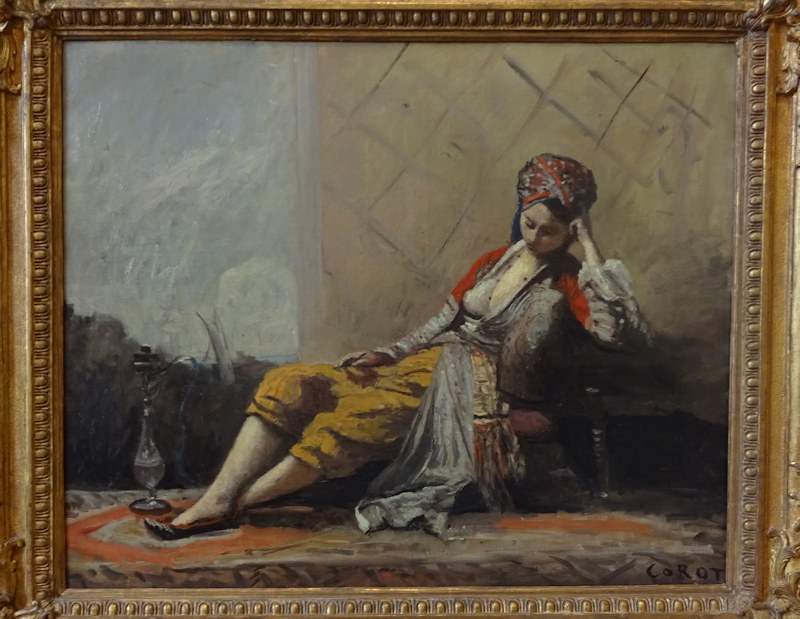
An odalisque by Corot, ca. 1873
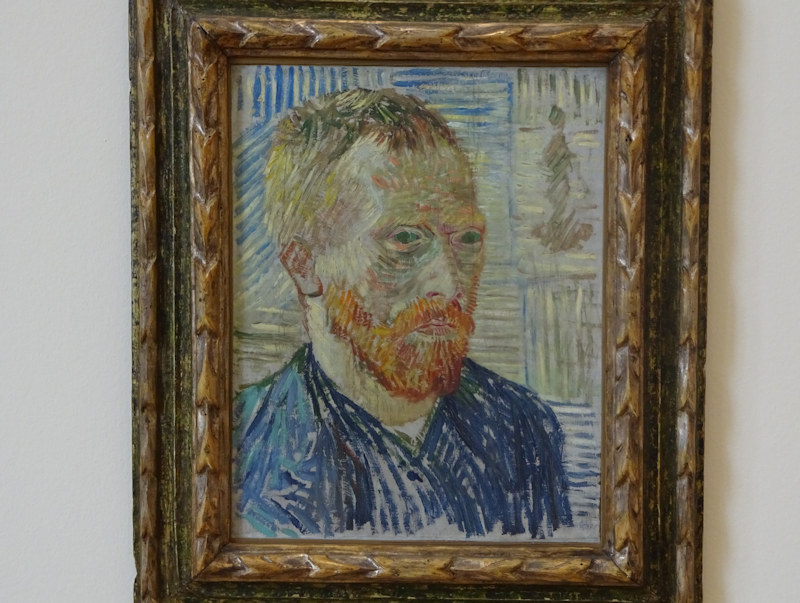
Van Gogh, 1887
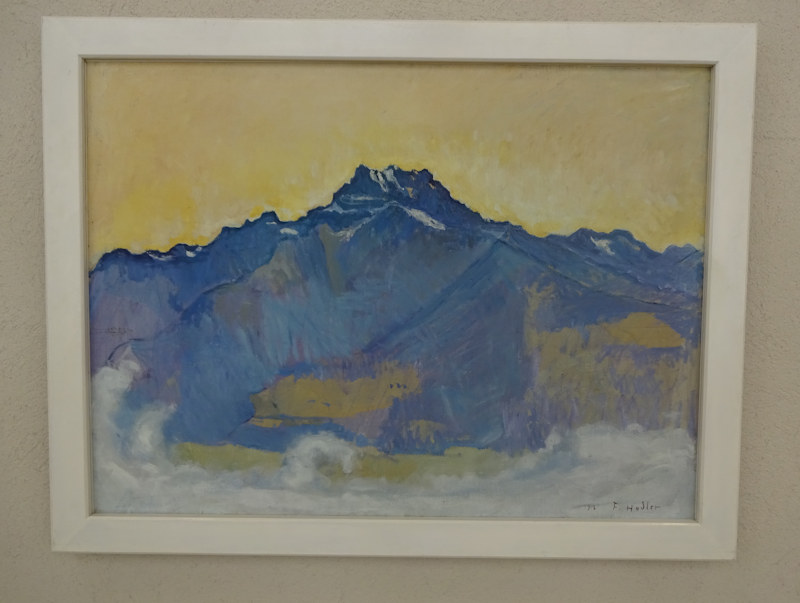
The Dents du Midi, by Ferdinand Hodler, 1912 (I'm not generally a Hodler fan, but this is the view from our back porch)
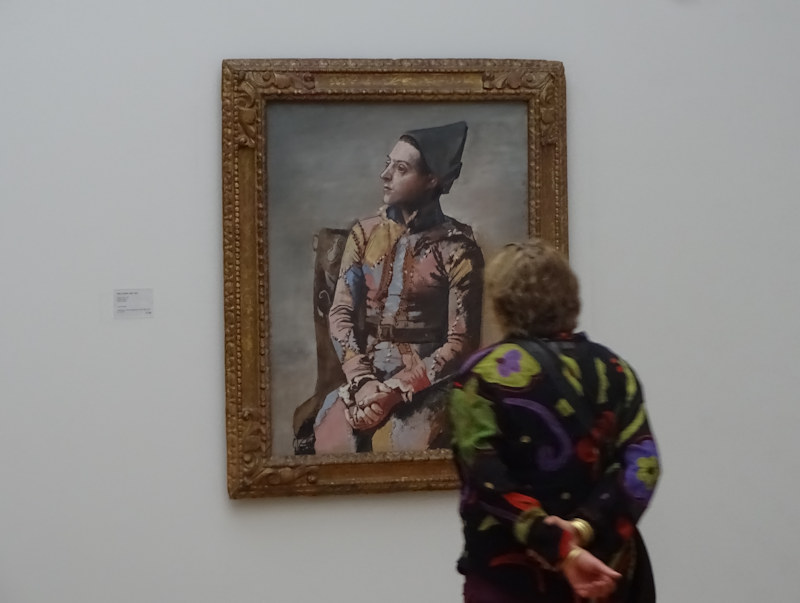
Picasso's Jacinto Salvadó as a Harlequin, 1923
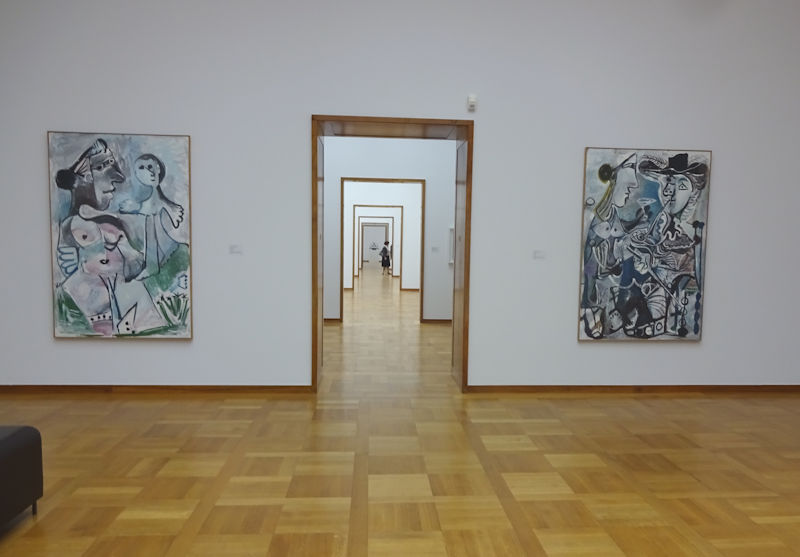
It's time to go.
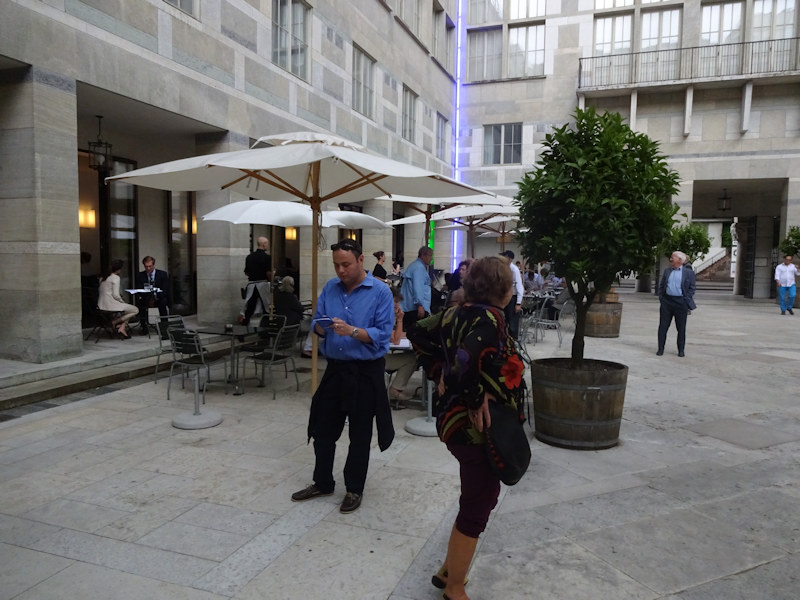
Checking for messages
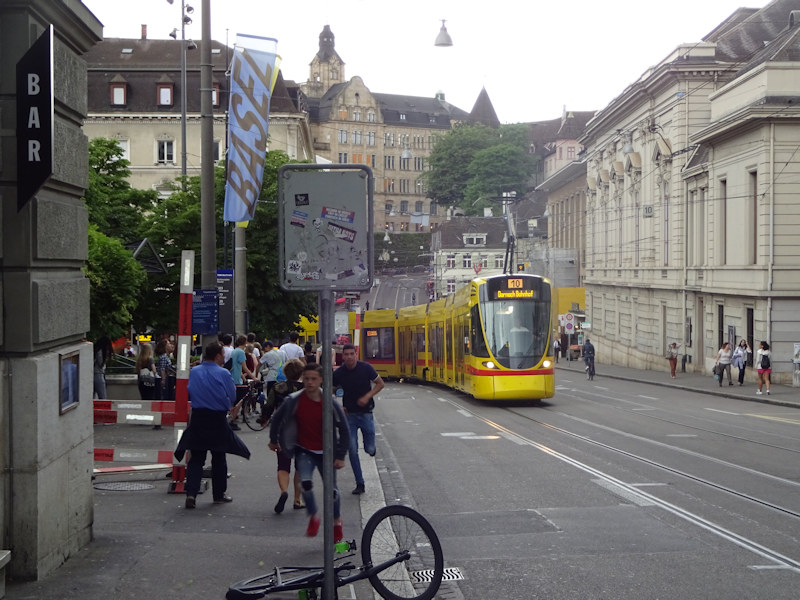
There's a rainstorm on the way.
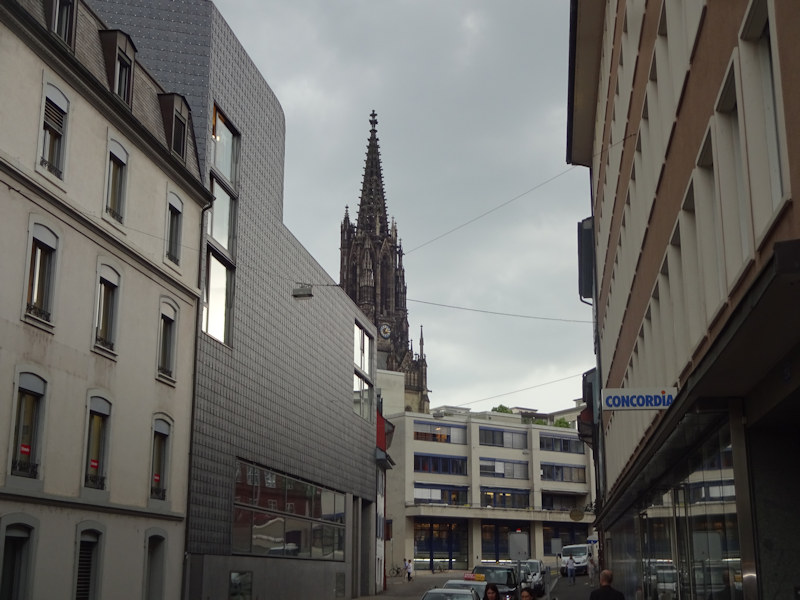
On Steinentorstrasse, racing the rain

Goodbye to Bâle for today
    
 

 Feedback
and suggestions are welcome if positive, resented if negative, Feedback
and suggestions are welcome if positive, resented if negative,  .
All rights reserved, all wrongs avenged. Posted 11 October 2016. .
All rights reserved, all wrongs avenged. Posted 11 October 2016.
|
 Dwight Peck's personal website
Dwight Peck's personal website






















